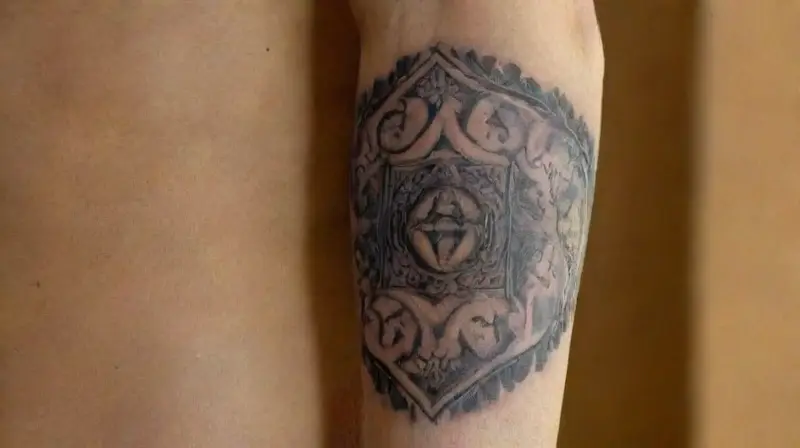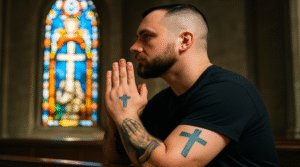Religious tattoos have long served as a meaningful expression of faith and cultural identity across various societies. These permanent designs are more than mere decoration; they embody spirituality and personal beliefs, connecting individuals to their heritage and traditions. In many cultures, such tattoos are regarded as sacred symbols that offer protection, blessings, and a sense of belonging.
As the world becomes increasingly globalized, the practice of religious tattooing faces both challenges and opportunities for cultural preservation. Despite modern influences, many communities continue to uphold these traditions as a vital part of their collective history. Recognizing the significance of religious tattoos helps highlight their role in maintaining cultural continuity and spiritual identity.
Historical Significance
Historically, religious tattoos date back thousands of years and have been prominent in numerous civilizations. Ancient Egyptians, Polynesians, and other indigenous groups used tattooing as a rituals to honor deities, mark social status, or commemorate significant life events. These markings often conveyed powerful symbolism that transcended generations.
Throughout history, religious tattoos have often served as sacred bonds between individuals and their faith. They acted as protective amulets and expressions of divine devotion. Whether depicting gods, spiritual symbols, or sacred texts, these tattoos kept religious values alive within communities despite external influences.
In many cases, these tattoos also functioned as identifiers, distinguishing members of particular religious groups or clans. They became integral to rituals, rites of passage, and communal ceremonies that reinforced shared beliefs and practices. This deep-rooted history emphasizes their role beyond mere aesthetics, as vital expressions of spiritual identity.
Cultural Identity and Practise
For numerous cultures, religious tattoos are a core element of cultural identity. They serve as visual representations of a community’s spiritual beliefs and social values. These tattoos often carry stories, legends, or historical narratives that are passed down through generations.
Practicing religious tattooing requires specialized skills and knowledge. Traditionally, artisans or spiritual leaders meticulously create designs that align with sacred texts and symbols. These practitioners are respected custodians of cultural heritage, ensuring that each tattoo adheres to spiritual and cultural standards.
Furthermore, religious tattoos foster a sense of belonging among community members. Wearers often see their tattoos as a badge of identity, signaling their faith and cultural roots. This communal aspect strengthens cultural cohesion and helps sustain traditions amid societal changes.
Symbols and Designs

Religious tattoos feature a diverse array of symbols and motifs, each imbued with specific meaning. Common religious imagery includes deities, sacred animals, and geometrical patterns that represent divine principles or spiritual concepts. These designs often serve as a toolkit for expressing complex beliefs visually.
The styles of religious tattoos vary greatly across different cultures and faiths. Some cultures favor intricate, detailed patterns, while others prefer simpler yet powerful designs. The choice of colors, placement, and motifs all contribute to the overall symbolism of the tattoo.
It is also important to recognize that many religious tattoos serve protective purposes. For example, certain symbols are believed to ward off evil spirits or bring good fortune. Through these designs, individuals seek spiritual guidance and safety in their daily lives.
Rituals and Ceremonies
The process of getting a religious tattoo is often intertwined with ceremonial rituals that hold spiritual significance. These ceremonies can be elaborate, involving prayers, offerings, or blessings from spiritual leaders. They respective mark the beginning of a sacred bond between the individual and their faith.
These rituals reinforce the tattoo’s spiritual importance and sanctity. Practitioners believe that proper ceremonies enhance the power and efficacy of the tattoo, making it a true extension of the person’s faith. This process underscores the sacred nature of the act, elevating it beyond ordinary body art.
In many traditions, the timing and ritual procedures are meticulously observed to ensure spiritual integrity. The community’s participation further emphasizes the communal meaning and shared commitment to uphold religious values through these tattoos.
Preservation Challenges

Despite their cultural significance, religious tattoo traditions face numerous challenges today. Modern lifestyles, migration, and cultural assimilation threaten the continuity of traditional techniques and meanings. Younger generations might view tattoos as fashion rather than a sacred practice, risking the loss of authentic heritage.
Furthermore, the commercialization of tattooing can distort the sacred symbolism associated with religious designs. Some artists may adopt these symbols superficially, diluting their spiritual significance. This commercialization can compromise the integrity of traditional practices and their cultural meaning.
There is also concern over cultural appropriation, where symbols may be used out of context or without understanding their sacred origins. Protecting these practices involves respectful education and transmission of knowledge to ensure their continuation in a meaningful and culturally sensitive manner.
Contemporary Revival
In recent years, there has been a growing movement to revive traditional religious tattoo practices. Many communities and artists are emphasizing the spiritual roots and cultural importance of these designs. This revival often involves workshops, cultural festivals, and apprenticeships to teach traditional techniques.
Contemporary artists are blending traditional motifs with modern tattoo styles, creating a bridge between heritage and current trends. This fusion helps make religious tattoos relevant and appealing to younger generations while preserving the sacred meanings behind the designs.
Moreover, some groups actively promote education about the cultural and religious significance of these tattoos to foster appreciation and respect. Such efforts aim to keep the tradition alive and ensure that the spiritual and cultural values embedded in religious tattoos continue to be honored.
Conclusion
Religious tattoos are a profound expression of faith and cultural identity that has persisted through centuries. They serve as sacred symbols, linking individuals with their spiritual heritage and community traditions. Preserving these practices is essential for safeguarding the rich cultural diversity that they embody.
Despite facing modern challenges, renewed interest and dedicated efforts help ensure the survival of religious tattoo traditions. Respectful transmission, education, and appreciation are key to maintaining their meaning and spiritual integrity for future generations. These tattoos continue to be powerful visual testimonies of faith that honor cultural preservation worldwide.







